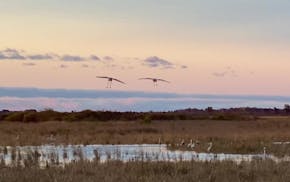Q I've had good luck growing most vegetables, except for beets. I've planted them where they get about four hours of direct sunlight a day, but I only get one or two plants from an entire packet of seeds. What can I do to get more beets?
A Hours of sunlight aren't a factor in beet seed germination, though they'd probably grow better if you planted them in a brighter location. So, what's wrong with your beets? Here are some ideas:
Beets can fail to come up if they're planted too deeply or started too early. It's best to plant them in early May, about the same time you would plant carrots. Plant them only about 1/2 inch deep, no deeper. Some people also recommend soaking beet seeds in warm water for 24 hours before planting.
Another potential problem with beet seeds is when the soil becomes hard and crusty from repeated rainfall before the seedlings emerge. Working organic matter into the soil before planting can help prevent the soil from crusting. Watering regularly after planting can keep the soil moist so it's easier for seedlings to emerge.
And, when the seedlings do come up, be sure to thin them so they're 2 to 3 inches apart. Otherwise, you'll get lots of leaves but little root development.
Stop the flop on bluestem Q The first year I planted little bluestem in my garden, it grew compact and upright. The second and third years, though, it got taller and flopped over. What can I do to keep it more compact?
A Little bluestem, a native ornamental grass, is just one of many perennials that need direct sunlight most of the day. If it only receives sun half of the day where you have it planted, transplant it to a brighter location now or in early fall.
Be sure that the transplant site is well-drained. Being able to withstand dry conditions is one reason why native plants are so prized. But that ability also means it requires different care. If you fertilize little bluestem each spring and water it regularly, as you would most garden perennials, it can grow too tall and floppy. In fact, once little bluestem is established in the garden, you shouldn't have to water it at all.
If you'd like to try another little bluestem, check out Blue Heaven, which was developed by the University of Minnesota. This variety starts out with blue-gray foliage in spring, reaches a height of about 4 feet during the summer, then turns burgundy red in fall. When the grass dries in late fall, it turns tan and remains upright in the garden through winter.
Deb Brown is a garden writer and former extension horticulturist with the University of Minnesota. To ask her a gardening question, call 612-673-7793 and leave a message. She will answer questions in this column only.

A Minnesota field guide to snow shovels: Which one's best?
Sign up for Star Tribune newsletters

